Abstract
1. The `collision' technique has been shown to be suitable for recording orthodromic `A' fibre activity in a whole, functioning cervical vagus nerve. This activity predominantly arises from pulmonary stretch receptors.
2. The amount and frequency of discharge from pulmonary stretch receptors in man, dog and cat, have been shown to increase with inspiration and decrease with expiration—the larger the tidal volume, the greater the discharge. At the end-expiratory level in man and dog, a tonic stretch receptor discharge is present. The results in cat and dog are in broad agreement with older work using single fibre techniques.
3. The stretch receptor discharge in man may be greater for a given degree of lung `stretch' than in cat or dog. There is certainly a discharge during eupnoea in man, and this must be contrasted with the absence of a Hering—Breuer inflation reflex in adult anaesthetized man with lung inflations of the order of a eupnoeic tidal volume. Furthermore, man does not develop slow, deep breathing with bilateral vagal block.
4. Since the characteristics of the activity from pulmonary stretch receptors with eupnoea in man are similar to those seen in other species, it must be concluded that this activity does not reach the central threshold to affect the respiratory centre.
Full text
PDF
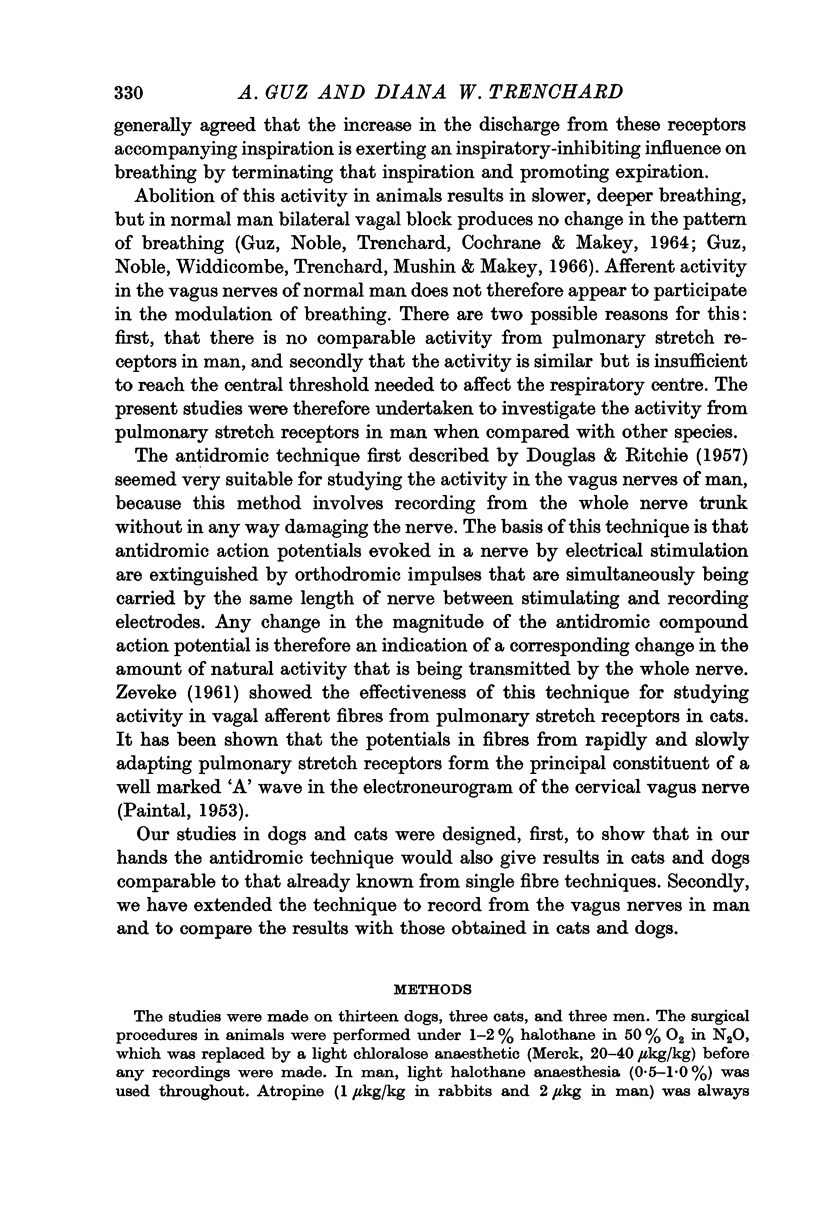
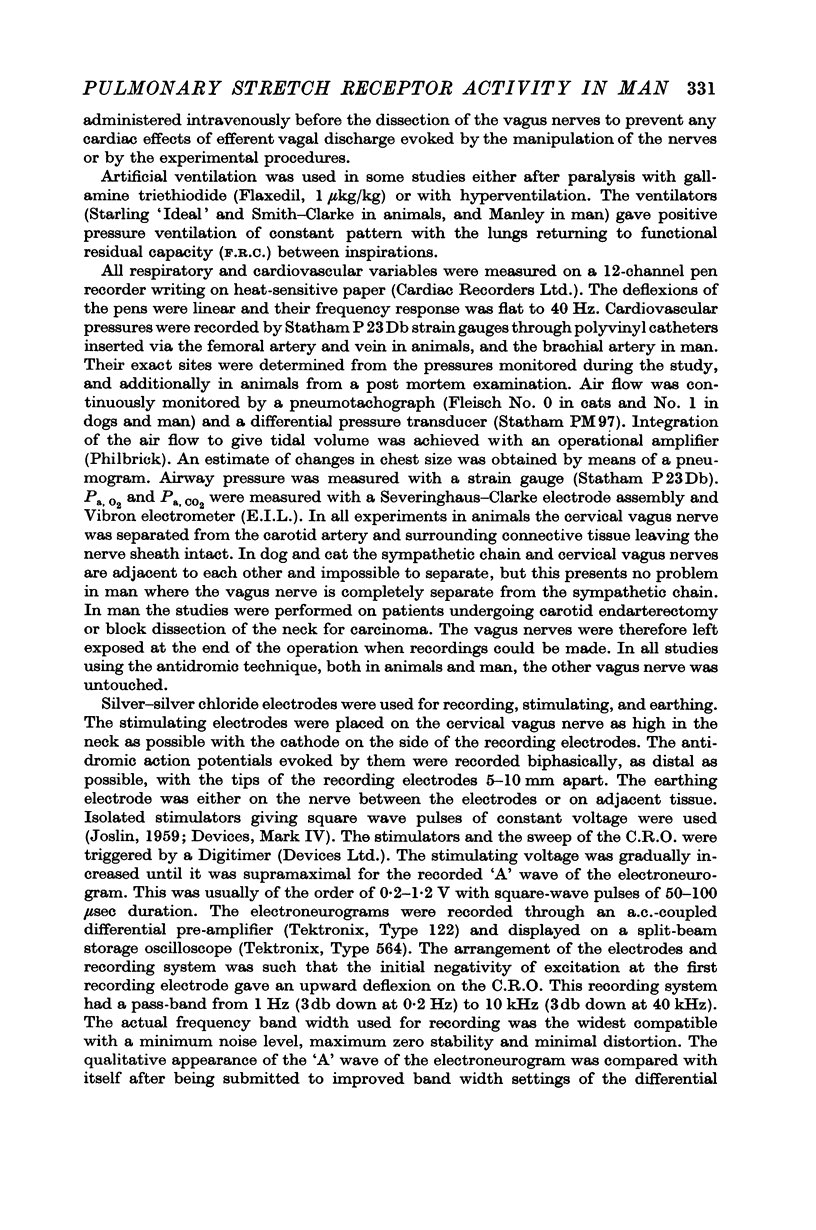
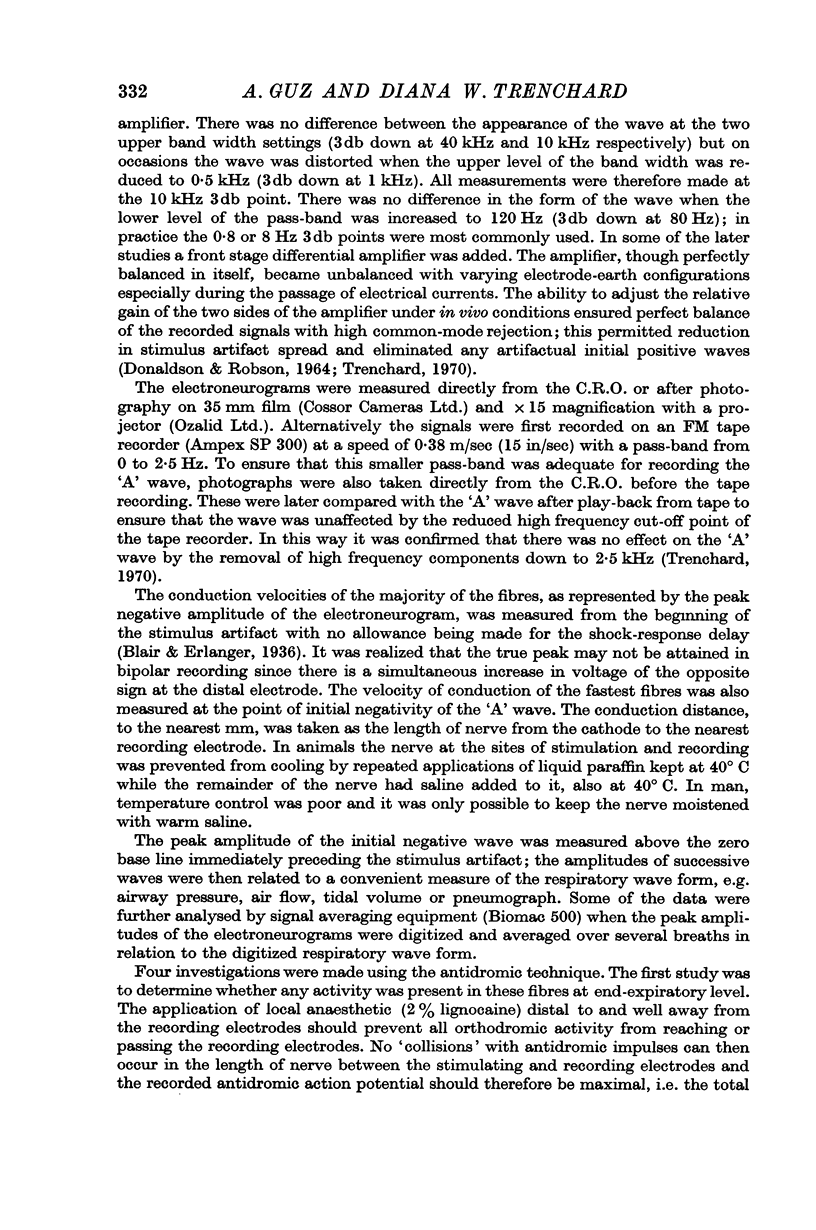

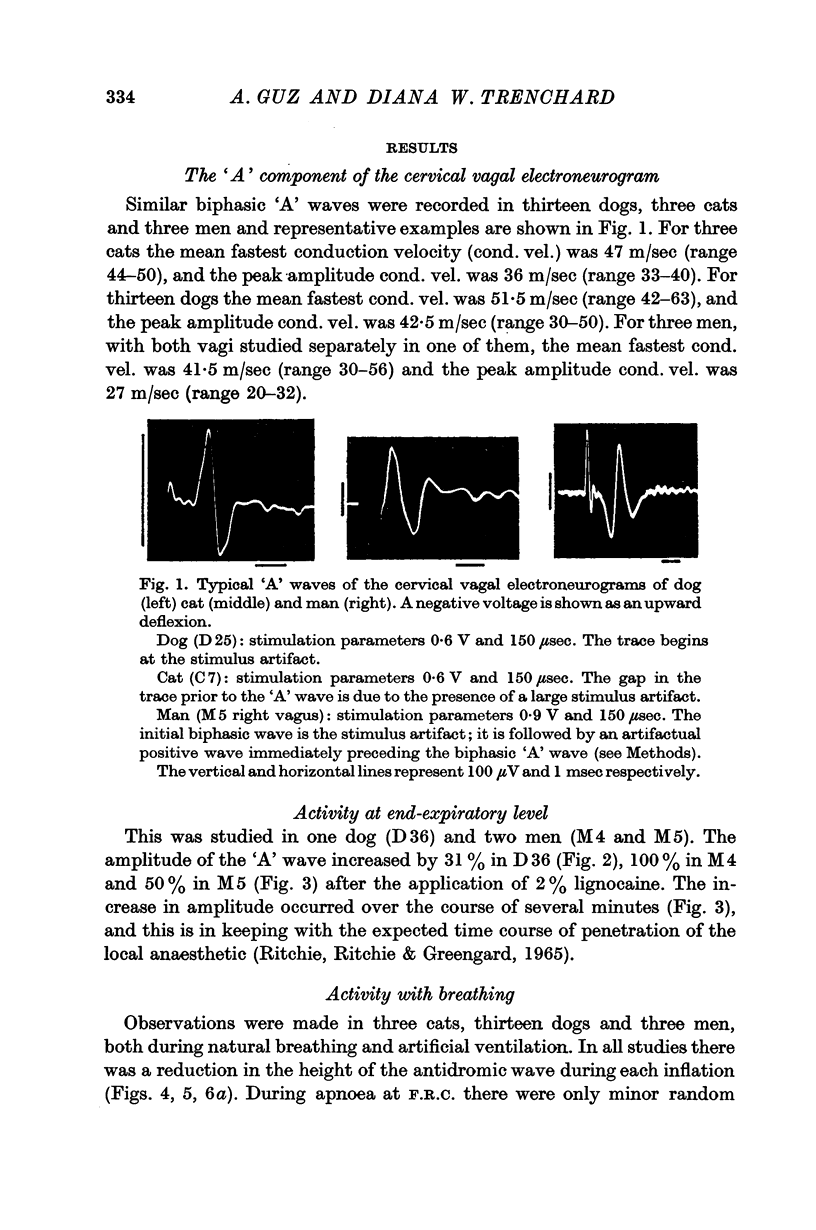


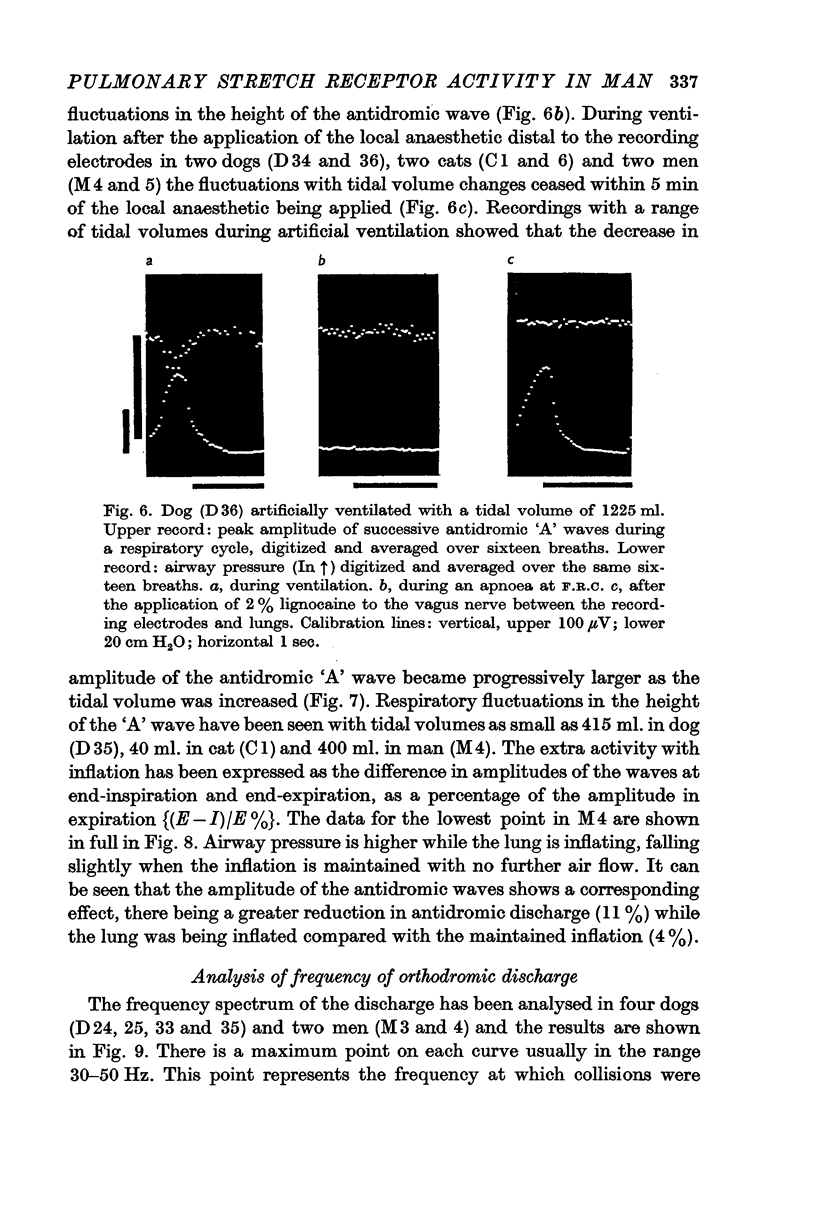


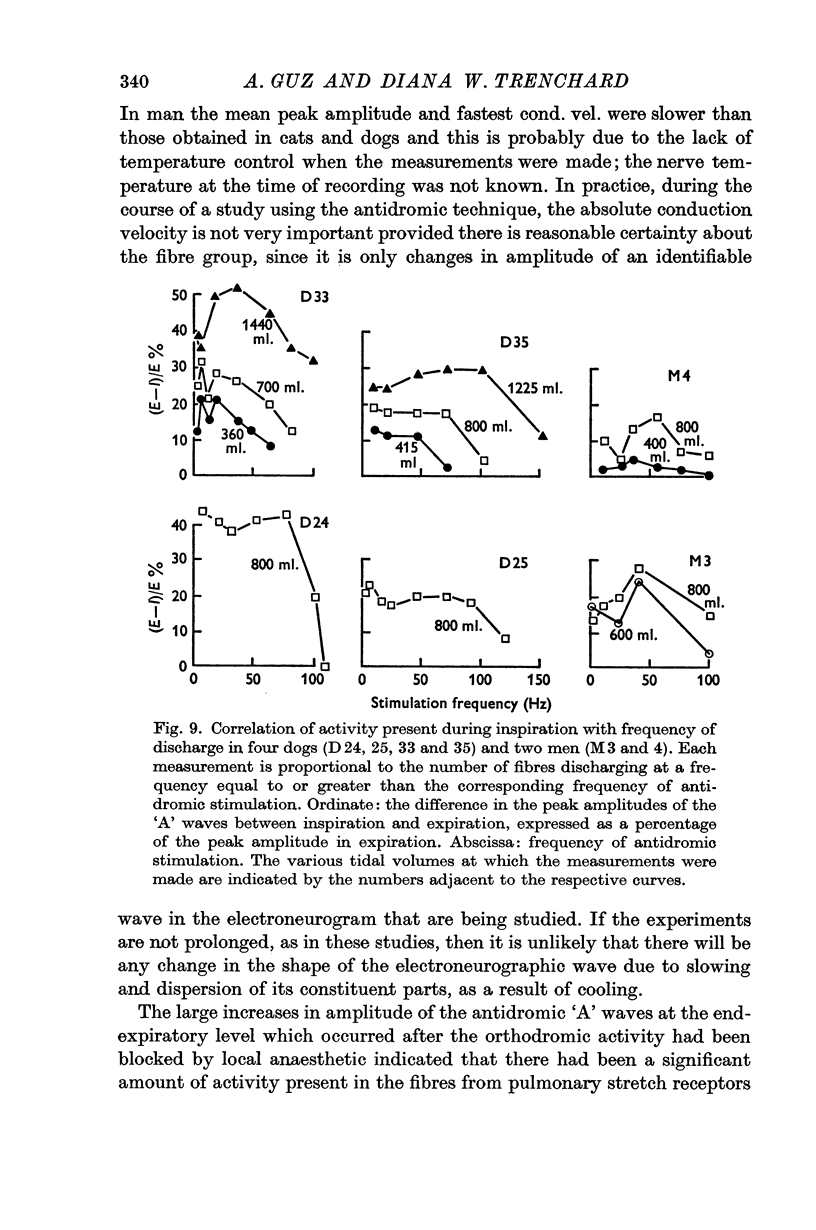

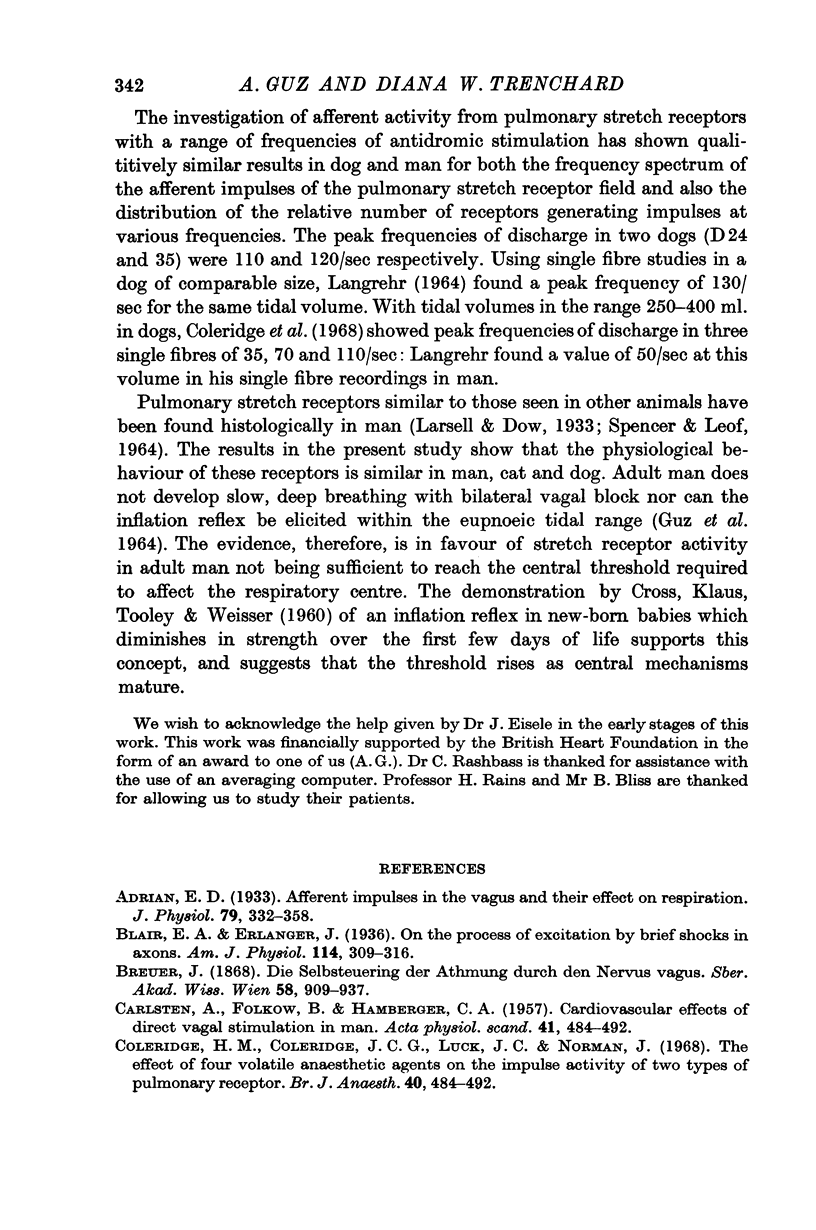

Selected References
These references are in PubMed. This may not be the complete list of references from this article.
- Adrian E. D. Afferent impulses in the vagus and their effect on respiration. J Physiol. 1933 Oct 6;79(3):332–358. doi: 10.1113/jphysiol.1933.sp003053. [DOI] [PMC free article] [PubMed] [Google Scholar]
- CROSFILL M. L., WIDDICOMBE J. G. Physical characteristics of the chest and lungs and the work of breathing in different mammalian species. J Physiol. 1961 Sep;158:1–14. doi: 10.1113/jphysiol.1961.sp006750. [DOI] [PMC free article] [PubMed] [Google Scholar]
- CROSS K. W., KLAUS M., TOOLEY W. H., WEISSER K. The response of the new-born baby to inflation of the lungs. J Physiol. 1960 Jun;151:551–565. doi: 10.1113/jphysiol.1960.sp006459. [DOI] [PMC free article] [PubMed] [Google Scholar]
- Coleridge H. M., Coleridge J. C., Luck J. C., Norman J. The effect of four volatile anaesthetic agents on the impulse activity of two types of pulmonary receptor. Br J Anaesth. 1968 Jul;40(7):484–492. doi: 10.1093/bja/40.7.484. [DOI] [PubMed] [Google Scholar]
- DAVIS H. L., FOWLER W. S., LAMBERT E. H. Effect of volume and rate of inflation and deflation on transpulmonary pressure and response of pulmonary stretch receptors. Am J Physiol. 1956 Dec;187(3):558–566. doi: 10.1152/ajplegacy.1956.187.3.558. [DOI] [PubMed] [Google Scholar]
- DOUGLAS W. W., RITCHIE J. M. A technique for recording functional activity in specific groups of medullated and non-medullated fibres in whole nerve trunks. J Physiol. 1957 Aug 29;138(1):19–30. doi: 10.1113/jphysiol.1957.sp005835. [DOI] [PMC free article] [PubMed] [Google Scholar]
- GUZ A., NOBLE M. I., TRENCHARD D., COCHRANE H. L., MAKEY A. R. STUDIES ON THE VAGUS NERVES IN MAN: THEIR ROLE IN RESPIRATORY AND CIRCULATORY CONTROL. Clin Sci. 1964 Oct;27:293–304. [PubMed] [Google Scholar]
- Guz A., Noble M. I., Widdicombe J. G., Trenchard D., Mushin W. W., Makey A. R. The role of vagal and glossopharyngeal afferent nerves in respiratory sensation, control of breathing and arterial pressure regulation in conscious man. Clin Sci. 1966 Feb;30(1):161–170. [PubMed] [Google Scholar]
- LANGREHR D. RECEPTOR-AFFERENZEN IM HALSVAGUS DES MENSCHEN. Klin Wochenschr. 1964 Mar 1;42:239–244. doi: 10.1007/BF01487951. [DOI] [PubMed] [Google Scholar]
- Loyd H. M., String S. T., DuBois A. B. Radiographic and plethysmographic determination of total lung capacity. Radiology. 1966 Jan;86(1):7–14. doi: 10.1148/86.1.7. [DOI] [PubMed] [Google Scholar]
- PAINTAL A. S. The conduction velocities of respiratory and cardiovascular afferent fibres in the vagus nerve. J Physiol. 1953 Aug;121(2):341–359. doi: 10.1113/jphysiol.1953.sp004950. [DOI] [PMC free article] [PubMed] [Google Scholar]
- PAINTAL A. S. VAGAL AFFERENT FIBRES. Ergeb Physiol. 1963;52:74–156. [PubMed] [Google Scholar]
- Ritchie J. M., Ritchie B., Greengard P. The effect of the nerve sheath on the action of local anesthetics. J Pharmacol Exp Ther. 1965 Oct;150(1):160–164. [PubMed] [Google Scholar]
- SPENCER H., LEOF D. THE INNERVATION OF THE HUMAN LUNG. J Anat. 1964 Oct;98:599–609. [PMC free article] [PubMed] [Google Scholar]
- Zeveke A. V., Khaiumin V. M. Izmerenie spektra chastoty afferentnykh impul'sov v tselom nervnom stvole. Fiziol Zh SSSR Im I M Sechenova. 1966 Mar;52(3):258–264. [PubMed] [Google Scholar]


